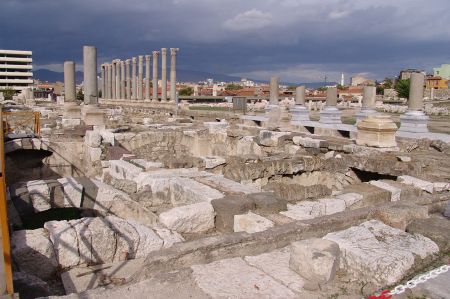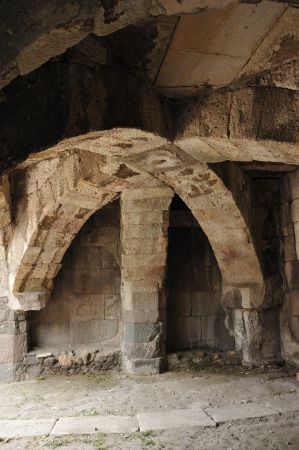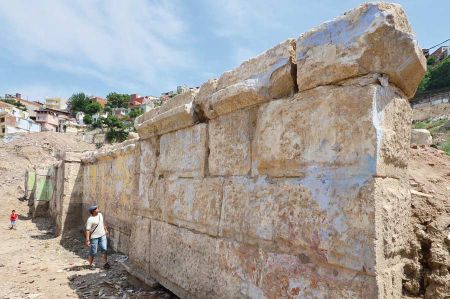Izmir - Expropriations allow exposure of Roman Amphitheatre
- Written by Portal Editor
It took many years and enormous costs until finally in Kadifekale, a district of Izmir, the excavation of one of the most important ancient theatres of Roman origin could begin.
In the meantime, some stage walls and the entrance area of the Roman amphitheatre of the former metropolis Smyrna have been uncovered.

As soon as the last houses are demolished, scientists will begin their excavations and investigations. The two archaeologists and architects Otto Berg and Otto Walter from Austria could make a significant contribution to this, since their studies, plans and drawings of the region from 1917 and 1918 provide them with the most well-founded knowledge of the ancient amphitheatre of Smyrna.

Ancient sources claim that St. Polycarp of Smyrna was killed in this amphitheatre in the early years of Christianity. It is also assumed that many other fates ended tragically in the theatre, because the Romans, with their pagan beliefs, persecuted the young Christianity wherever possible. Saint Polycarp of Smyrna, believed to have been born around AD 69, was Bishop of Smyrna in the 2nd century. According to tradition, he was 86 years old at the time of his death. He was probably executed by the Romans in 155. He is also called the destroyer of the pagan gods.
Polycarp - Apostolic Father and Bishop of Smyrna
As Bishop of Smyrna, Polycarp met with Aniket, the Bishop of Rome, in Rome in 155 to settle questions about the date of Easter. The Eastern Church celebrated Easter on the Jewish Passover, no matter what day of the week it fell (quarto deciman). The Western Church, on the other hand, celebrated Easter on the first Sunday after Passover. The Easter dispute was not settled at that time; both sides maintained their practice.
Eventually it was paraded in the amphitheatre for popular amusement. The Proconsul refused to let Polycarp be mauled by animals because that point of the program had already ended, but he allowed Polycarp to be burned. The people immediately took matters into their own hands; amidst the cheering crowd he was burned at the stake at the age of 86.
According to legend, however, the flames could not harm him, and a pleasant smell rose from the pyre. Finally, Polycarp had to be stabbed with a dagger.
Polycarp is considered a martyr and recognized as a saint by the Catholic and Orthodox Churches. Relics of the saint are on the high altar of the church of Sant'Ambrogio della Massima.
It remains to be seen whether further findings can be found during the forthcoming excavations. It's always exciting. The city government has plans after the end of the excavations to restore the theatre and use it again for events comparable to those in Ephesus.
Please read as well:
De 1800 Roeden – cultural park worth seeing in Amsterdam
Serhat Dogan - His view of German habits
-
-
-
-
-
-
-
-
-
-
-
-
https://www.alaturka.info/en/turkey-country/aegean/6238-izmir-expropriations-allow-exposure-of-roman-amphitheatre/amp#sigProId9e0bf01e72
